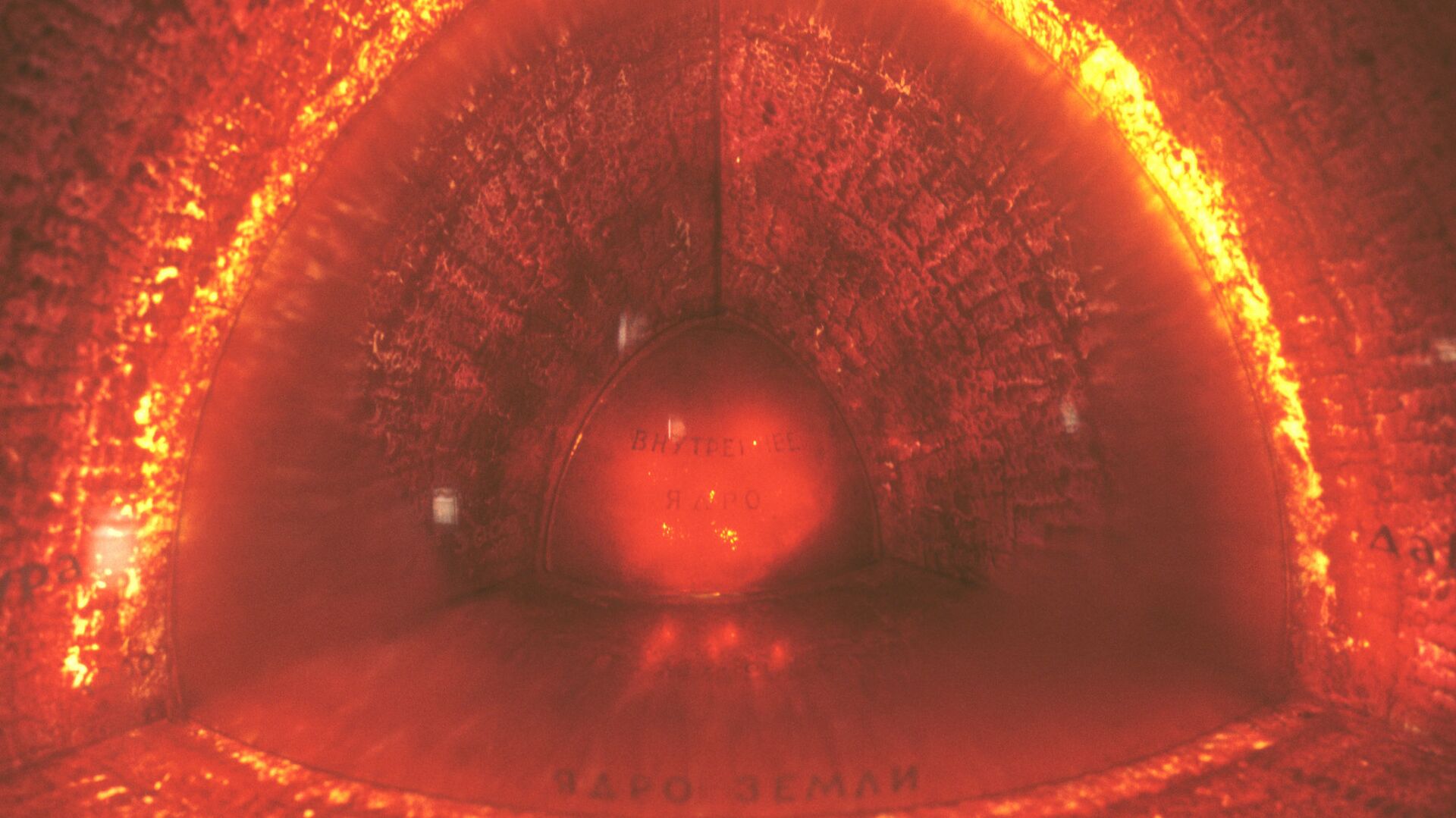https://sputnikglobe.com/20231023/deep-earth-leaks-ultra-rare-helium-isotope-study-suggests-1114429986.html
'Deep Earth' Leaks Ultra-Rare Helium Isotope, Study Suggests
'Deep Earth' Leaks Ultra-Rare Helium Isotope, Study Suggests
Sputnik International
The origin of helium in the universe dates back to the Bing Bang, which took place 13.8 billion years ago.
2023-10-23T19:04+0000
2023-10-23T19:04+0000
2023-11-25T05:13+0000
beyond politics
earth
study
scientists
core
helium
https://cdn1.img.sputnikglobe.com/img/103935/56/1039355656_0:639:2004:1766_1920x0_80_0_0_4aa257c403c54152b932a126386ac900.jpg
Our planet’s core might be leaking the ultra-rare isotope helium-3, which indicates a higher level of activity deep inside the Earth than expected, a new study has revealed.The research was conducted by geochemists from the California Institute of Technology and the Woods Hole Oceanographic Institution, who explored lava flows on Baffin Island in the 62-million-year-old Arctic Archipelago in Canada.Commenting on the research, Horton told reporters that he and his colleagues “know very little about Earth's core, other than that it exists.”Horton stressed he thinks that the study “lends credence to the idea that material, or at least helium, leaks out of the core.” The scientist added that he “finds this exciting because it suggests that the deep Earth is more dynamic than we realized: elements move between the metallic and rocky parts of our planet.”Helium-4 or 4He is the stable and most abundant isotope of the noble gas, which is found in concentrations 20 million times greater than Helium-3 in the Earth's mantle.According to media reports, the research is expected to shed more light on the time when our planet “came together from a swirl of dust and primordial gas” in the time of the Big Bang, which occurred almost 14 billion years ago.
https://sputnikglobe.com/20230706/scientists-reveal-earths-inner-core-much-more-similar-to-tapestry-of-fabric--1111688548.html
earth
Sputnik International
feedback@sputniknews.com
+74956456601
MIA „Rossiya Segodnya“
2023
Oleg Burunov
https://cdn1.img.sputnikglobe.com/img/07e4/09/0b/1080424846_0:0:2048:2048_100x100_80_0_0_3d7b461f8a98586fa3fe739930816aea.jpg
Oleg Burunov
https://cdn1.img.sputnikglobe.com/img/07e4/09/0b/1080424846_0:0:2048:2048_100x100_80_0_0_3d7b461f8a98586fa3fe739930816aea.jpg
News
en_EN
Sputnik International
feedback@sputniknews.com
+74956456601
MIA „Rossiya Segodnya“
Sputnik International
feedback@sputniknews.com
+74956456601
MIA „Rossiya Segodnya“
Oleg Burunov
https://cdn1.img.sputnikglobe.com/img/07e4/09/0b/1080424846_0:0:2048:2048_100x100_80_0_0_3d7b461f8a98586fa3fe739930816aea.jpg
origin of helium in the universe, earth's core, geochemists' research, helium isotope
origin of helium in the universe, earth's core, geochemists' research, helium isotope
'Deep Earth' Leaks Ultra-Rare Helium Isotope, Study Suggests
19:04 GMT 23.10.2023 (Updated: 05:13 GMT 25.11.2023) The origin of helium in the universe dates back to the Big Bang, which took place 13.8 billion years ago. Some of this rare isotope was swallowed by the Earth as it formed, while more was thrown outward in the process.
Our planet’s core might be leaking the ultra-rare isotope helium-3, which indicates a higher level of activity deep inside the Earth than expected, a new study has revealed.
The research was conducted by geochemists from the California Institute of Technology and the Woods Hole Oceanographic Institution, who explored lava flows on Baffin Island in the 62-million-year-old Arctic Archipelago in Canada.
The scientists, led by Forrest Horton, found record concentrations of helium-3 isotopes inside the ancient rocks they studied, something that made them believe that this is the most compelling evidence of a slow leak in Earth's core.
Commenting on the research, Horton told reporters that he and his colleagues “know very little about Earth's core, other than that it exists.”
“This makes studying the core both intriguing and frustrating. Traditionally, the core and outer layers of our planet (mantle and crust) were presumed to be geochemically isolated (i.e., material does not transfer back and forth). Increasingly, scientists have been challenging this notion,” the geochemist pointed out.
Horton stressed he thinks that the study “lends credence to the idea that material, or at least helium, leaks out of the core.” The scientist added that he “finds this exciting because it suggests that
the deep Earth is more dynamic than we realized: elements move between the metallic and rocky parts of our planet.”
“Also, helium in the core may have survived the Moon-forming giant impact, which is believed to have melted and mixed all of the rocky material on Earth. So, the high 3He/4He ratios we measured may be an indication that helium—and perhaps other light elements like hydrogen and carbon—survived the cataclysmic origins of our planet by being sheltered in the core,” the geochemist concluded.
Helium-4 or 4He is the stable and most abundant isotope of the noble gas, which is found in concentrations 20 million times greater than Helium-3 in the Earth's mantle.
According to media reports, the research is expected to shed more light on the time when our planet “came together from a swirl of dust and primordial gas” in the time of the Big Bang, which occurred almost 14 billion years ago.




